In our previous blog post we had discussed about What is Salesforce1.In these blog post we discuss about What is Web-to-Lead in Salesforce
Contents
- 1 Introduction to Web to Lead:-
- 2 What is Web-to-Lead in Salesforce?
- 3 How Web-to-Lead Works:-
- 4 Technical Aspects:-
- 5 Setting Up Web-to-Lead in Salesforce:-
- 6 Customizing the Form:-
- 7 Managing Leads Captured from Web-to-Lead:-
- 8 Monitoring and Reporting:-
- 9 Best Practices for Using Web-to-Lead:-
- 10 Conclusion:-
- 11 FAQs:
What is Web-to-Lead in Salesforce
Introduction to Web to Lead:-
Capturing potential customers’ information efficiently is a crucial aspect of any business. Salesforce offers a powerful feature known as Web-to-Lead, which streamlines the process of generating leads directly from your website. This article provides an in-depth look at what Web-to-Lead is, how it works, its benefits, and how to set it up and use it effectively.
What is Web-to-Lead in Salesforce?
Definition of Web-to-Lead:-
Web-to-Lead is a Salesforce feature that allows businesses to capture information from website visitors and automatically create leads in Salesforce. When a visitor fills out a form on your website, their details are sent directly to Salesforce, where a new lead record is created. This helps in organizing and managing potential customer information efficiently.
Purpose and Benefits:-
Purpose:
- Lead Generation: Streamline the process of collecting leads from your website.
- Automation: Automatically create leads in Salesforce without manual data entry.
- Efficiency: Improve the efficiency of lead management and follow-up processes.
Benefits:
- Time-Saving: Reduces the need for manual data entry, saving time and reducing errors.
- Immediate Lead Capture: Capture leads instantly as they fill out the form, ensuring timely follow-up.
- Better Organization: Organize and manage leads within Salesforce, improving tracking and nurturing.
- Customization: Customize the lead capture form to collect relevant information specific to your business needs.
How Web-to-Lead Works:-
The Process:-
- Website Form: A form is embedded on your website to collect visitor information, such as name, email, phone number, and other details.
- Form Submission: When a visitor submits the form, the data is sent to Salesforce via a secure connection.
- Lead Creation: Salesforce receives the data and automatically creates a new lead record in the system.
- Lead Management: The new lead can then be assigned to sales representatives, added to campaigns, and nurtured through the sales funnel.
Technical Aspects:-
HTML Form:
- The form on your website is typically created using HTML and includes fields to capture necessary information.
Salesforce Web-to-Lead Endpoint:
- Salesforce provides a unique endpoint URL to which the form data is sent. This URL processes the form submission and creates the lead in Salesforce.
Field Mapping:
- Each form field is mapped to corresponding lead fields in Salesforce to ensure data is captured accurately.
Setting Up Web-to-Lead in Salesforce:-
Step-by-Step Guide:-
- Log in to Salesforce:
- Access your Salesforce account with appropriate administrative privileges.
- Navigate to Web-to-Lead Setup:
- Go to Setup > Feature Settings > Marketing > Web-to-Lead.

- Enable Web-to-Lead:
- If not already enabled, click on “Edit” and check the “Enable Web-to-Lead” checkbox.
- Create Web-to-Lead Form:
- Click on “Create Web-to-Lead Form”. Select the fields you want to include in the form.

- Generate the HTML Code:
- Salesforce will generate the HTML code for the form. Copy this code.
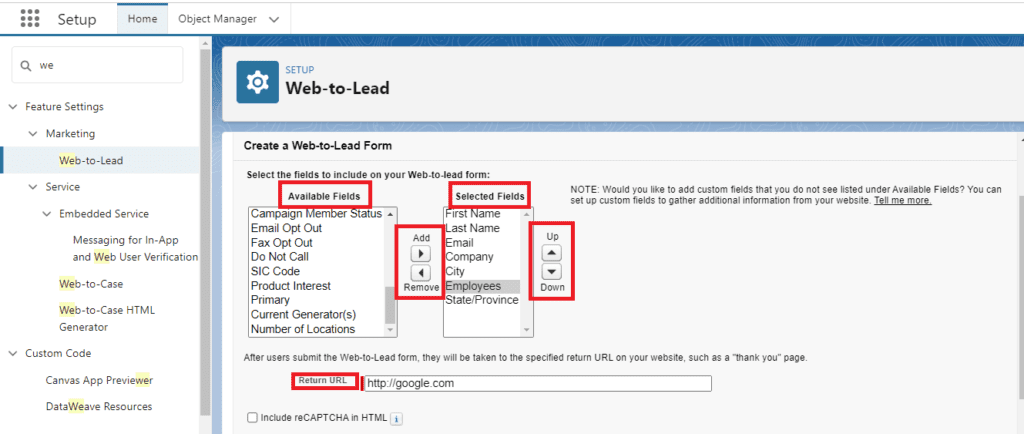
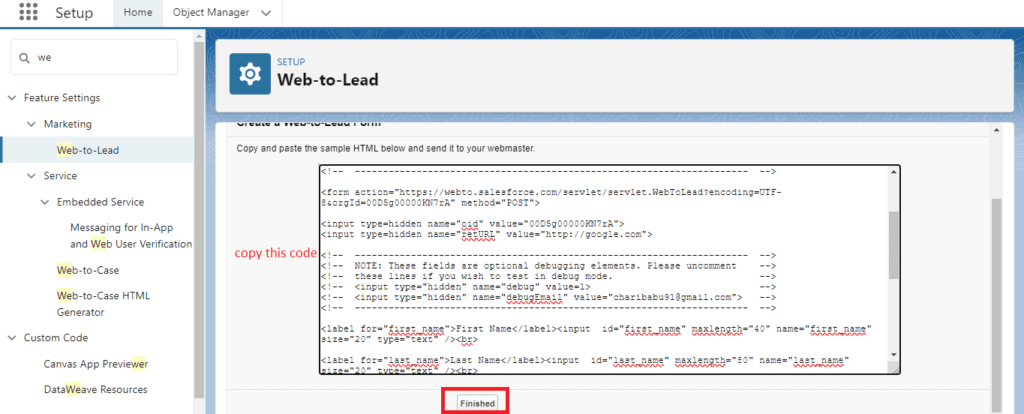
- Embed the Form on Your Website:
- Paste the HTML code into the appropriate location on your website where you want the form to appear.
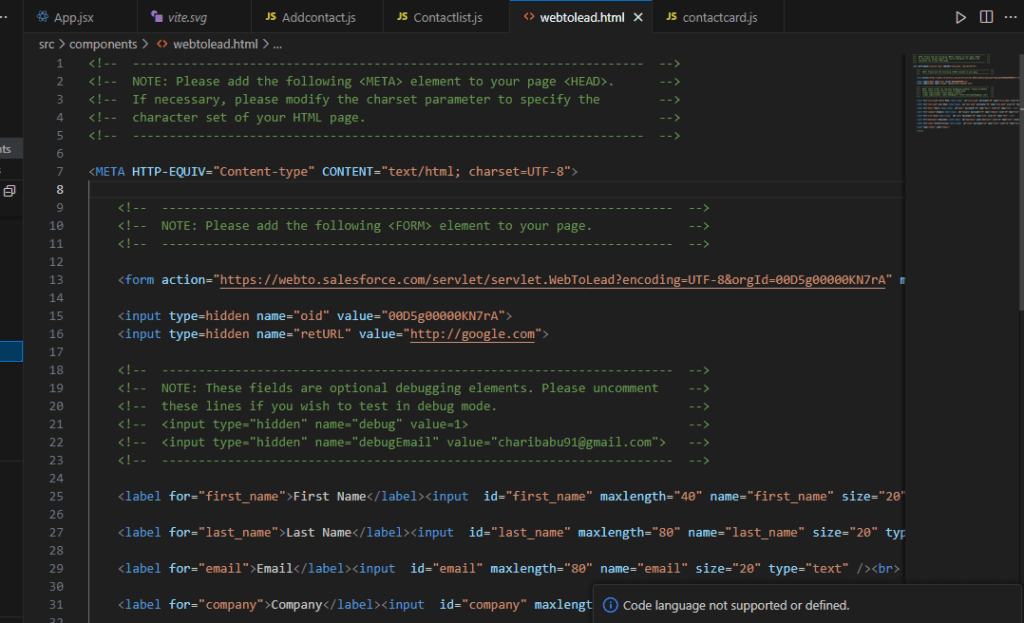
- Test the Form:
- Submit a test entry through the form to ensure it is working correctly and that leads are being created in Salesforce.

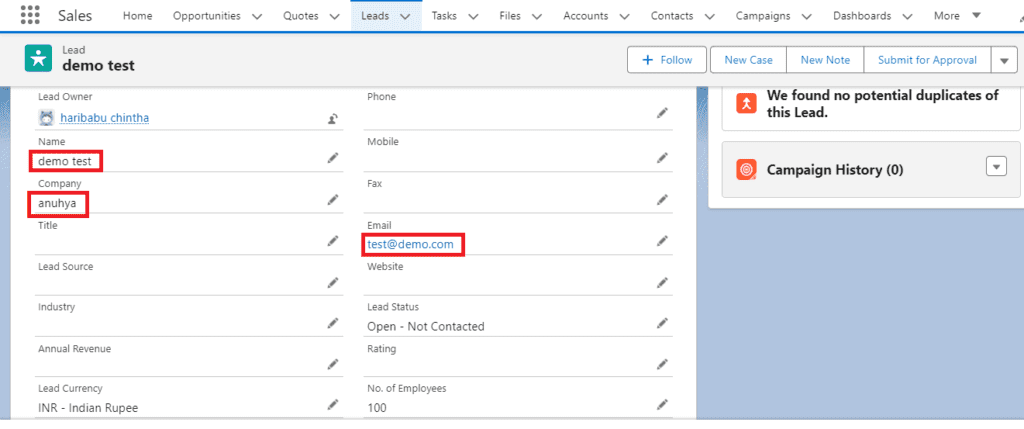
Customizing the Form:-
Adding Custom Fields:
- Customize the form by adding or removing fields to capture specific information relevant to your business.
Styling the Form:
- Use CSS to style the form to match your website’s branding and design.
Validation Rules:
- Implement validation rules to ensure that the data entered by users is accurate and complete.
Managing Leads Captured from Web-to-Lead:-
Lead Assignment Rules:-
Automatic Assignment:
- Set up lead assignment rules to automatically assign leads to specific sales representatives based on criteria such as geography, lead source, or other factors.
Lead Follow-Up:-
Automated Responses:
- Create auto-response rules to send a confirmation email to leads as soon as they submit the form. This helps acknowledge their interest and provides further information.
Lead Nurturing:
- Add leads to nurturing campaigns to keep them engaged through personalized emails, follow-up calls, and targeted marketing efforts.
Monitoring and Reporting:-
Track Lead Sources:
- Use Salesforce reports and dashboards to track the effectiveness of different lead sources and optimize your marketing strategies.
Analyze Lead Quality:
- Analyze the quality of leads captured through Web-to-Lead by monitoring conversion rates and other key performance indicators.
Best Practices for Using Web-to-Lead:-
Optimize Form Placement:-
- Place the form prominently on high-traffic pages of your website to maximize visibility and lead capture.
Keep Forms Simple:-
- Keep the form short and simple to encourage more submissions. Only ask for essential information initially and gather additional details later in the sales process.
Ensure Mobile Compatibility:-
- Make sure the form is mobile-friendly, as many users will access your website from their mobile devices.
Maintain Data Privacy:-
- Ensure that your form complies with data privacy regulations, such as GDPR. Clearly inform users about how their data will be used and obtain their consent.
Regularly Review and Update:-
- Regularly review the form and update it as needed to capture relevant information and improve user experience.
Conclusion:-
Web-to-Lead is a powerful feature in Salesforce that streamlines the process of capturing and managing leads from your website. By automating lead creation and leveraging Salesforce’s robust lead management capabilities, businesses can improve efficiency, enhance lead nurturing, and ultimately drive better sales outcomes. Implementing Web-to-Lead involves setting up the form, embedding it on your website, and configuring lead management processes to ensure seamless operation.
FAQs:
What is Web-to-Lead in Salesforce?
Web-to-Lead is a Salesforce feature that allows businesses to capture lead information from their website and automatically create leads in Salesforce.
How do I set up Web-to-Lead in Salesforce?
To set up Web-to-Lead, enable the feature in Salesforce, create a web-to-lead form, generate the HTML code, and embed the form on your website. Test the form to ensure it is working correctly.
Can I customize the Web-to-Lead form?
Yes, you can customize the form by adding or removing fields, styling it with CSS, and implementing validation rules to ensure accurate data capture.
How are leads managed after being captured through Web-to-Lead?
Leads can be automatically assigned to sales representatives, added to nurturing campaigns, and tracked using Salesforce reports and dashboards.
What are the best practices for using Web-to-Lead?
Best practices include optimizing form placement, keeping forms simple, ensuring mobile compatibility, maintaining data privacy, and regularly reviewing and updating the form.
You want learn more about this topic is What is Web-to-Lead in Salesforce click here
In our next blog post we will discuss about What is Web-to-Case in Salesforce
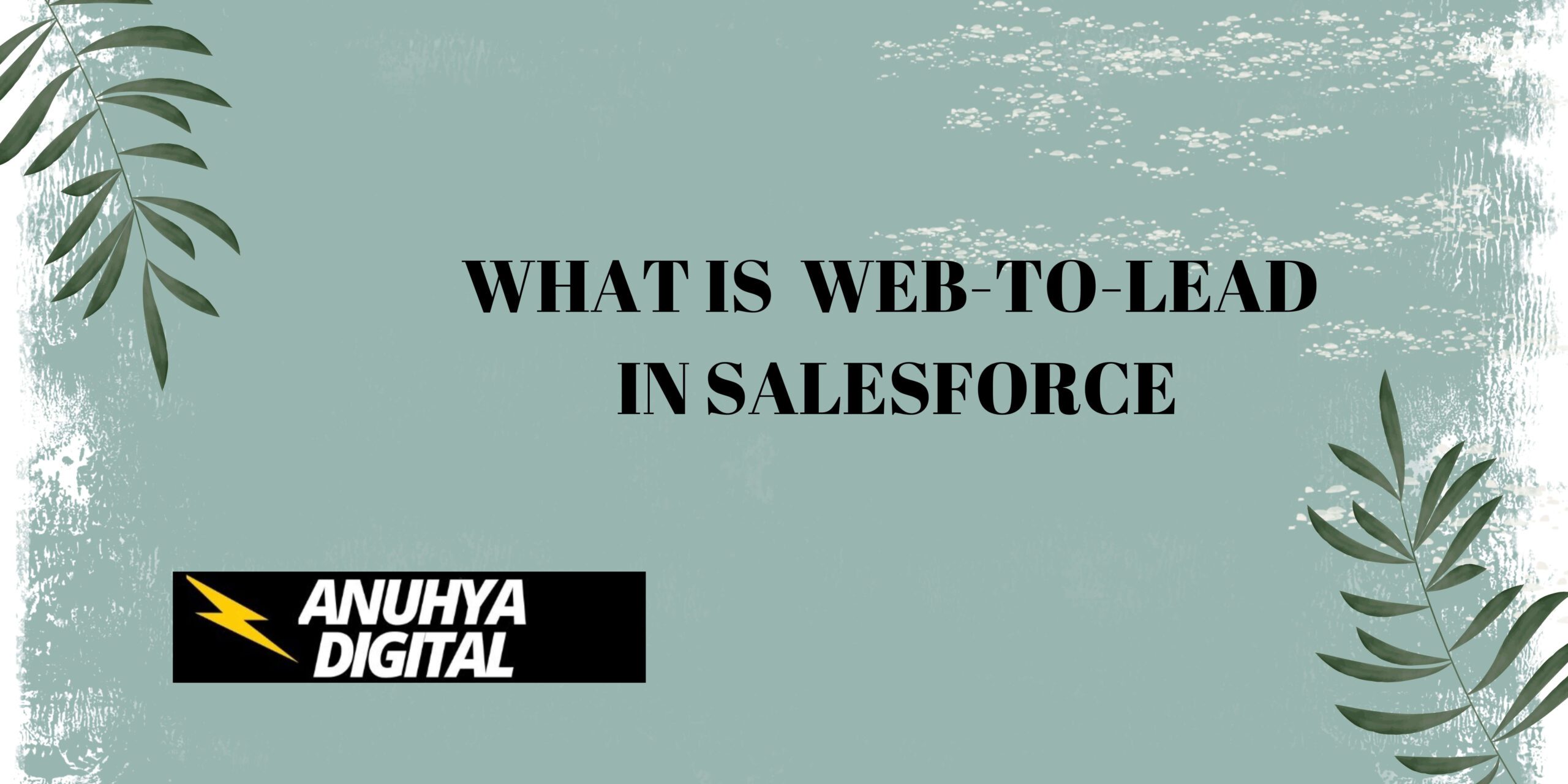
2 thoughts on “What is Web-to-Lead in Salesforce”